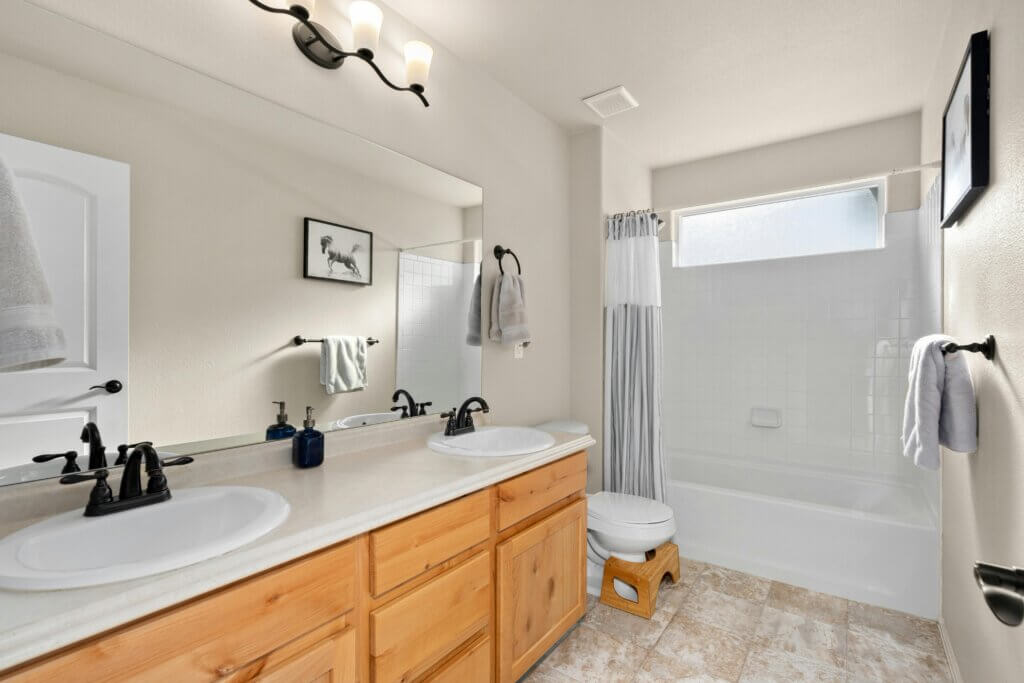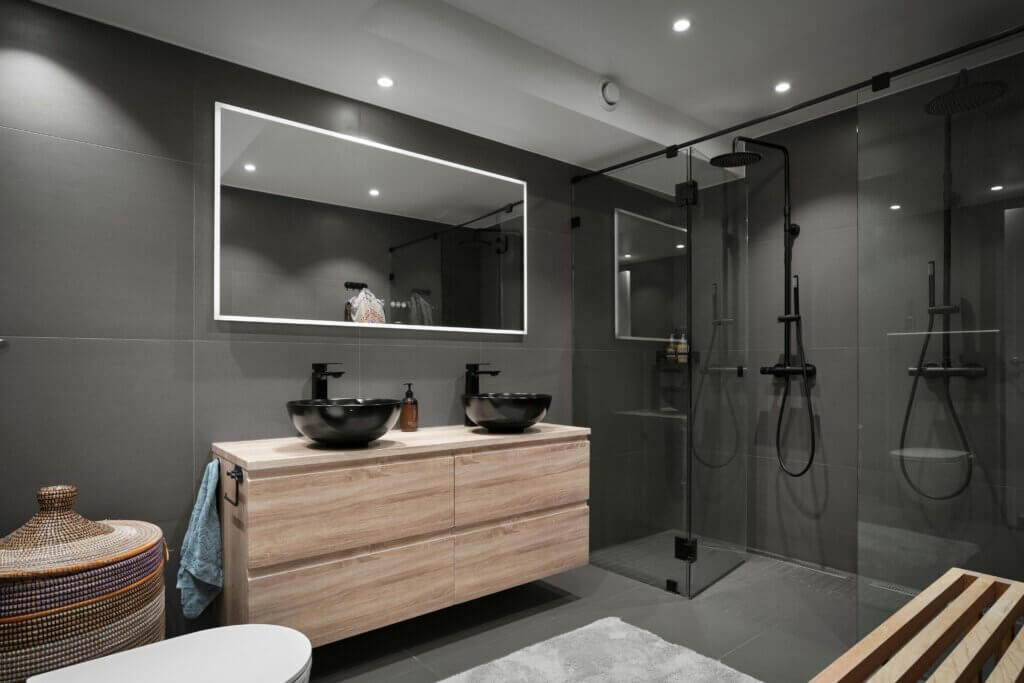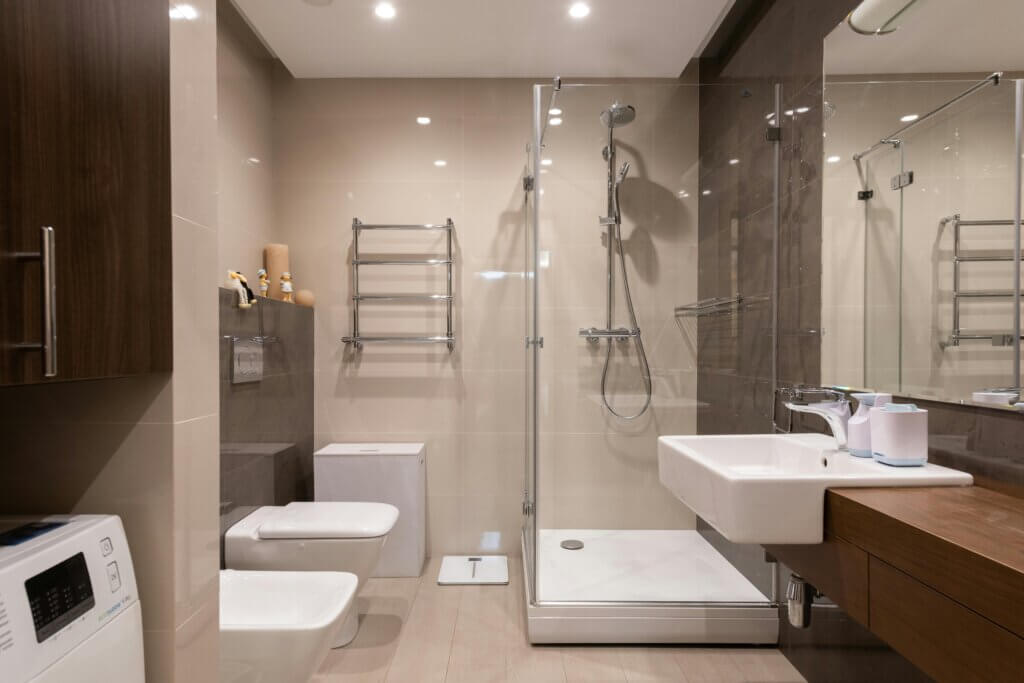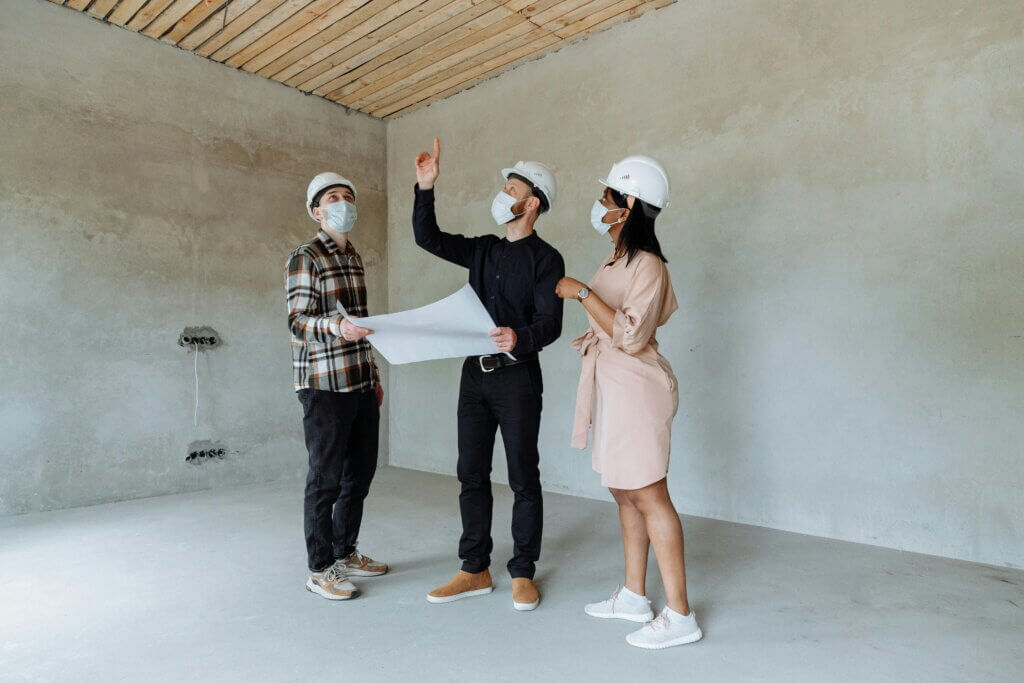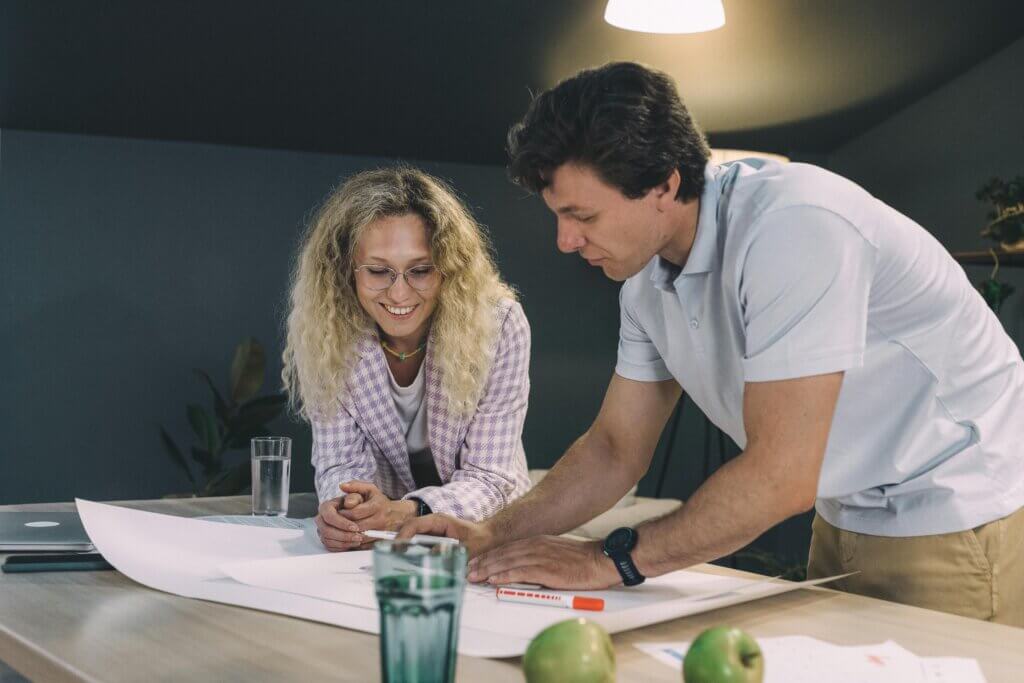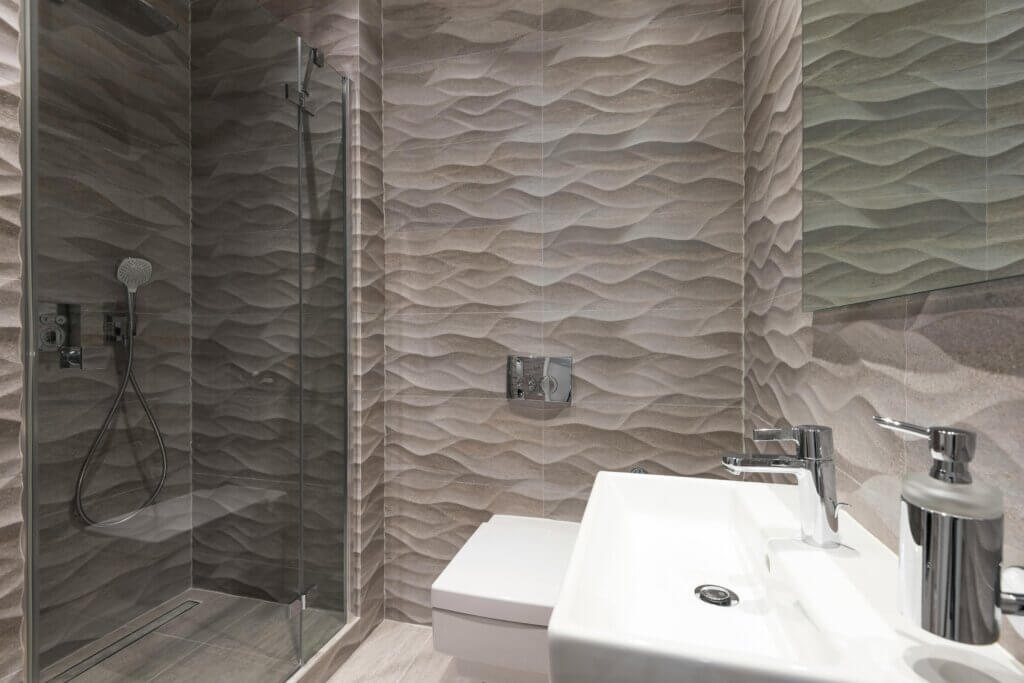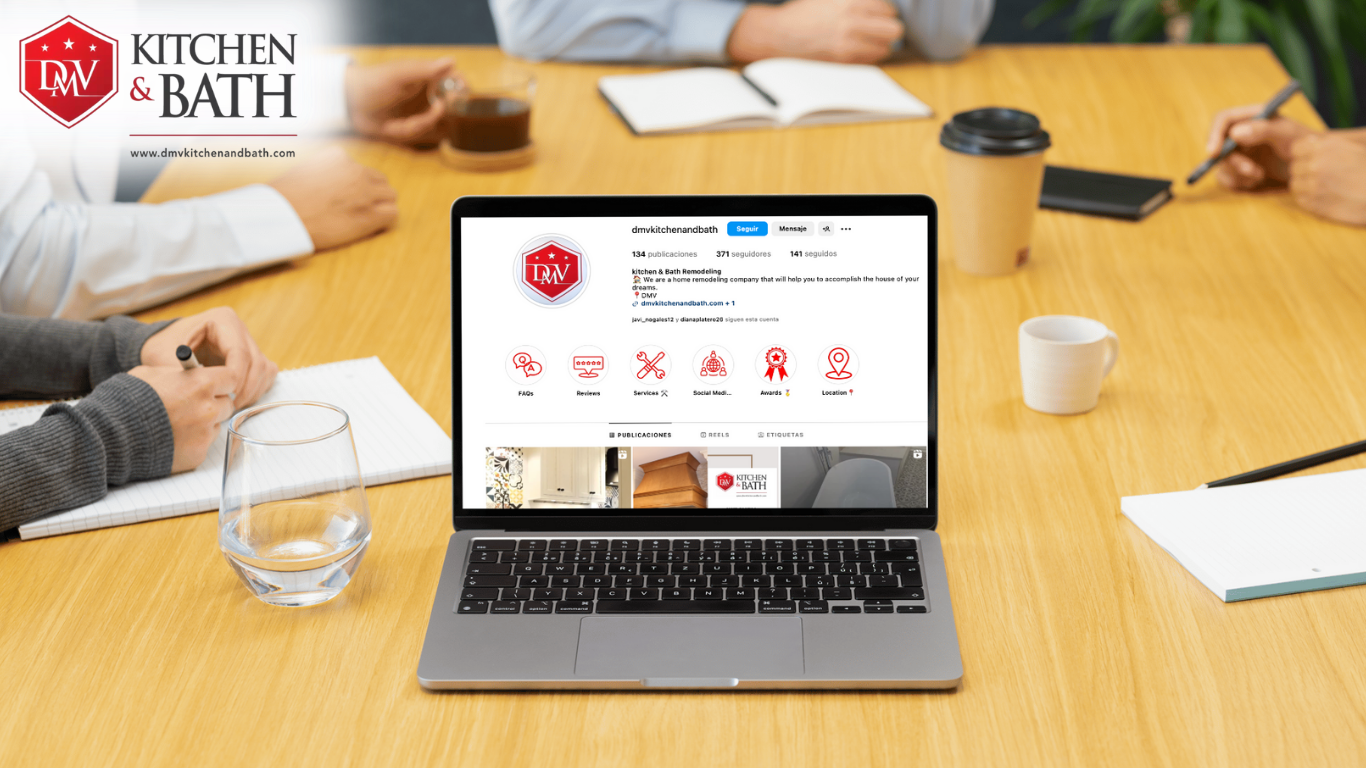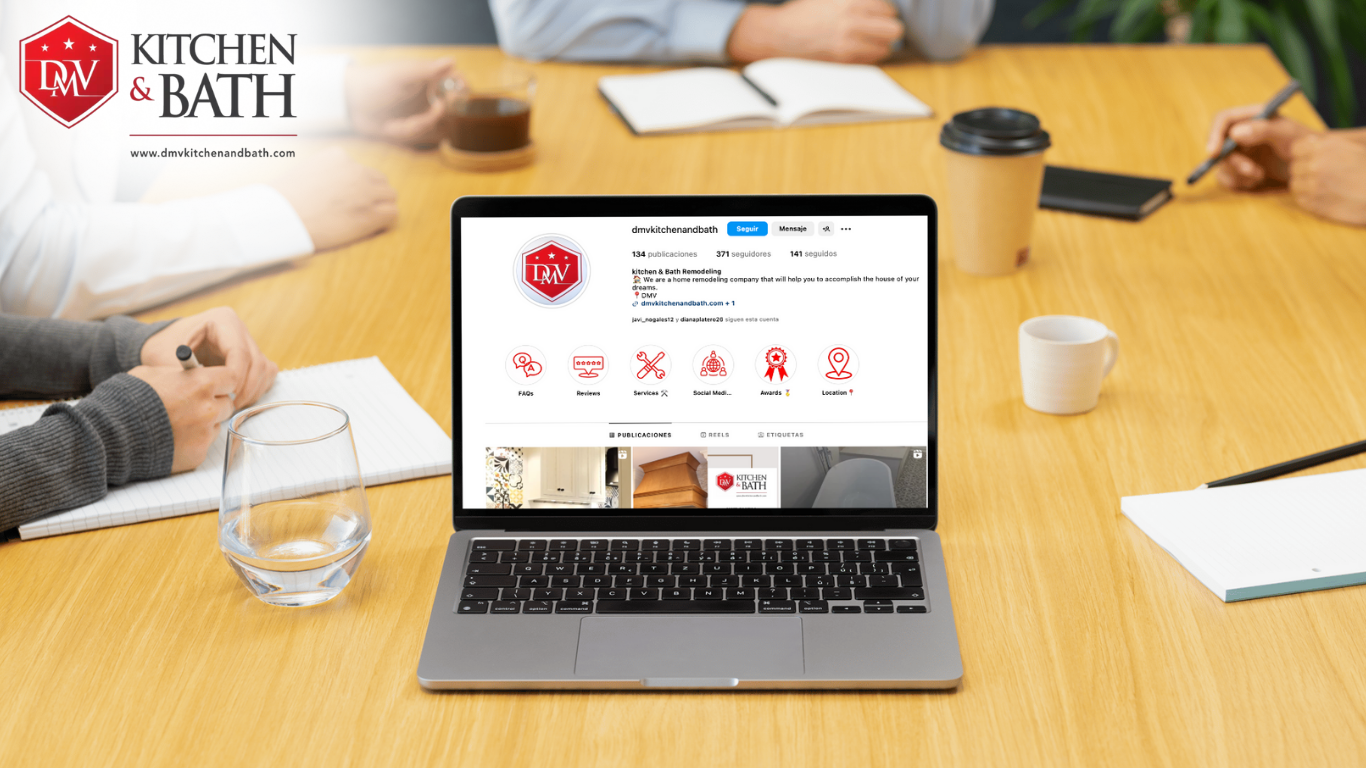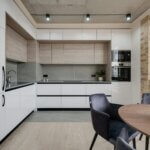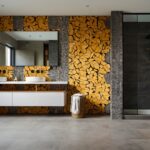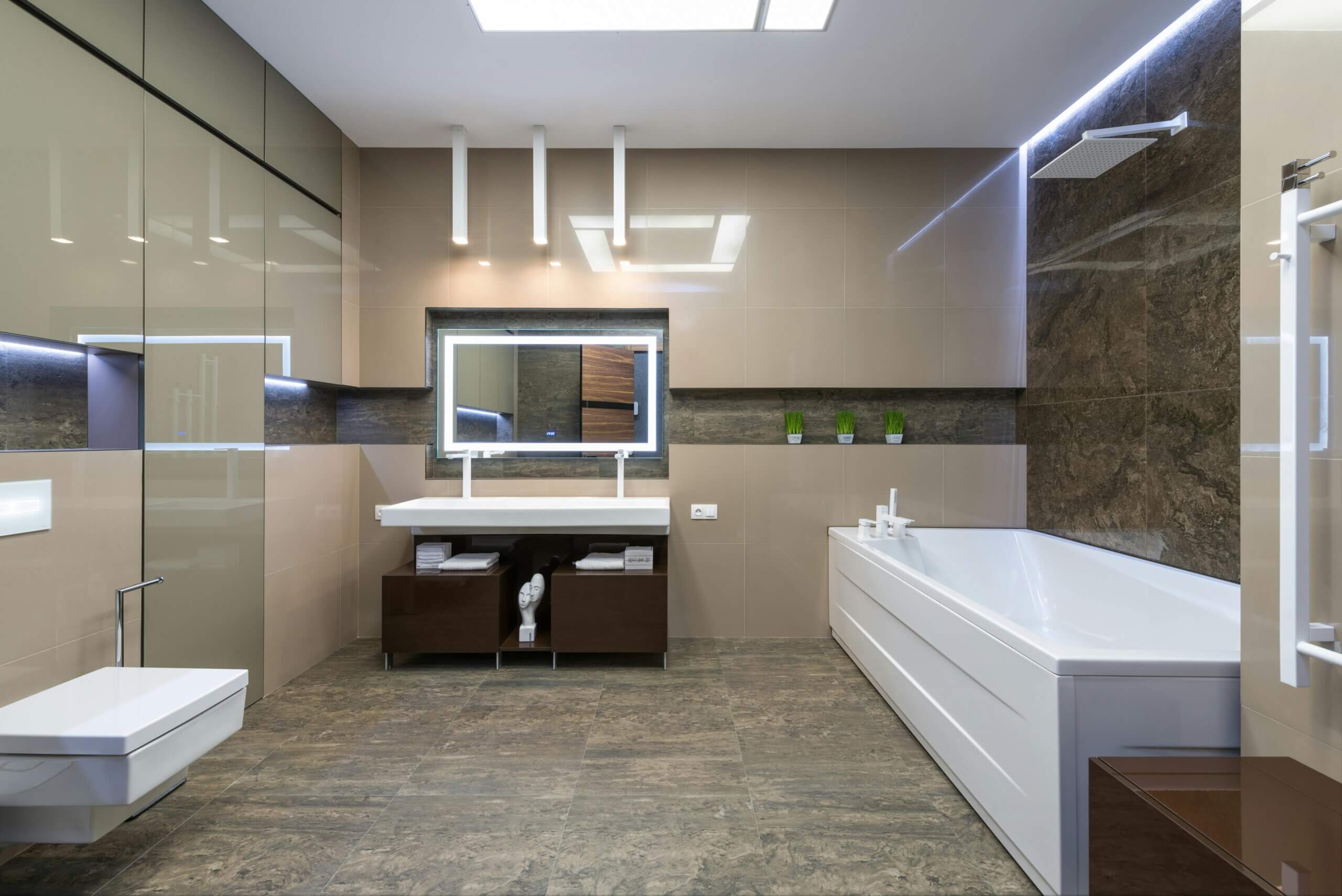
Why Your Business Needs a Professional Bathroom Remodel Designer18 min read
Whether you’re a business owner, a property manager, a contractor, or someone looking to upgrade your commercial space, the decision to remodel your bathroom is more than just a matter of aesthetics—it’s about creating an environment that speaks volumes about your attention to detail, your commitment to quality, and your desire to enhance the experience of everyone who walks through your doors.
Now, you might be thinking, “Why not tackle it myself? How hard could it be to pick out some tiles and install some fixtures?” Well, let me tell you—it’s not just about picking out tiles. It’s about understanding the flow of space, ensuring compliance with regulations, optimizing functionality, and creating a design that not only looks good but works flawlessly in a commercial setting.
That’s where professional bathroom remodel designers come in. These are the experts who eat, sleep, and breathe bathroom design. They’re not just decorators; they’re architects of experience. They know how to transform a cramped, outdated restroom into a sleek, modern oasis that elevates your business’s image and delights your customers or employees.
Contents
Why Your Business Needs a Professional Bathroom Remodel Designer
In the competitive landscape of modern business, every detail counts. Your commercial space is a reflection of your brand’s commitment to quality and professionalism. That’s why when it comes to renovating your business’s bathrooms, hiring a professional bathroom remodel designer who can also handle kitchen remodels is not just a luxury but a strategic investment.
Beyond aesthetics, a bathroom remodel designer brings invaluable expertise in spatial planning and functionality. Professional designers provide comprehensive services, including plumbing and electrical work, to ensure a seamless renovation process. Navigating practical challenges in bathroom and kitchen remodeling often requires a blend of expertise, foresight, and problem-solving skills.
Here’s how a professional bathroom remodel designer tackles these challenges.
Space Optimization in Bathroom Remodeling
Designers excel in maximizing every square inch of your bathroom, especially crucial in both large and small bathrooms where efficient use of space is essential. They assess the layout, consider traffic flow, and strategically place fixtures to enhance functionality without compromising on aesthetics.
Storage Solutions
One of the common challenges in bathrooms is storage. Designers employ creative solutions such as built-in shelving, recessed cabinets, or space-saving tub and vanity designs to ensure ample storage without cluttering the space.
Fixture Placement, Plumbing, and Shower Updates
Proper placement of fixtures like sinks, toilets, showers, and bathtubs is critical for optimal functionality. Transforming small bathrooms into large walk-in showers can add extra space and enhance the overall design. Designers understand plumbing requirements and ensure that fixtures are installed correctly to avoid issues such as leaks or drainage problems down the line.
Accessibility and ADA Compliance
For commercial projects, adherence to ADA (Americans with Disabilities Act) standards is essential. Designers incorporate accessible design elements such as grab bars, wider doorways, and wheelchair-accessible sinks to ensure inclusivity and compliance with regulations.
Ventilation and Moisture Control
Effective ventilation is crucial to prevent mold and mildew growth in bathrooms. Designers specify appropriate ventilation systems and moisture-resistant wall materials to maintain a healthy environment and prolong the lifespan of your remodel.
Choosing Durable Materials and Material Selection
Selecting durable materials is key to ensuring longevity and ease of maintenance. Designers recommend materials such as porcelain tiles, quartz countertops, and moisture-resistant paints that withstand daily wear and tear in a bathroom environment.
Lighting Design
Proper bathroom lighting enhances both the functionality and ambiance of the space. Designers carefully plan lighting placement to eliminate shadows, provide task lighting where needed (e.g., near the mirror), and create a welcoming atmosphere.
Energy Efficiency
Incorporating energy-efficient fixtures and technologies not only reduces utility costs but also aligns with sustainable practices. Designers recommend options like low-flow toilets, LED lighting, and water-saving faucets to minimize environmental impact without sacrificing performance.
Project Management
Beyond design expertise, designers manage the entire remodeling process, including full remodel projects, from start to finish. They coordinate with contractors, schedule inspections, and address any unforeseen challenges promptly to keep the project on track and within budget.
Compliance and Peace of Mind
Navigating building codes and accessibility requirements can be daunting without professional guidance. A free design consultation is often the first step taken by professional designers, allowing customers to discuss their vision and get expert insight. Here’s how professional bathroom remodel designers handle compliance to ensure a smooth and worry-free renovation.
Expert Knowledge of Regulations
Designers are well-versed in local building codes, zoning laws, and industry regulations about bathroom construction and renovation. They stay updated on any changes or new requirements that may impact the project.
ADA Accessibility Standards
For commercial spaces and even residential projects where accessibility is a consideration, designers ensure compliance with ADA (Americans with Disabilities Act) standards. This includes specifications for clearance around fixtures, grab bar placements, and accessible entryways, ensuring inclusivity for all users.
Permit Acquisition and Documentation
Designers manage the process of acquiring necessary permits and approvals from local authorities. They handle all paperwork and documentation, ensuring that the house remodel is conducted legally and avoids potential fines or delays.
Structural and Safety Compliance
Ensuring structural integrity and safety is paramount. A bathroom remodel designer assesses structural components such as load-bearing walls, plumbing systems, and electrical wiring to ensure they meet safety standards and can support the planned bathroom renovation.
Quality Assurance
By adhering to regulations, designers uphold quality standards in materials and workmanship. They specify durable, code-compliant materials that meet safety requirements, contributing to the longevity and reliability of the remodel.
Risk Mitigation
Compliance with regulations mitigates risks associated with improper installations or non-compliant designs. Designers identify potential hazards early in the planning stages and address them proactively, minimizing liability and ensuring a safe environment for occupants.
Peace of Mind for Clients
For homeowners and businesses alike, compliance offers peace of mind throughout the remodeling process. Knowing that the project is being handled by professionals who prioritize safety and legal adherence allows clients to focus on the excitement of transforming their space.
Professional Accountability
Designers ensure that all aspects of the bathroom remodeling project meet regulatory standards. They oversee contractors and inspections, maintaining accountability for the project’s compliance from start to finish.
Cost-Effective Solutions
While it’s tempting to DIY or cut corners, investing in a professional ensures long-term cost efficiency. Material selection is a key factor in achieving cost-effective solutions. Cost-effective solutions are a cornerstone of professional bathroom remodel designers’ approach, ensuring that your project stays within budget without compromising on quality or style.
Here’s how they achieve this.
Budget Planning and Transparency
Designers start by discussing your budget and priorities. They provide a clear breakdown of costs for the remodel’s materials, labor, and other expenses. This transparency helps you make informed decisions and avoid unexpected expenses.
Efficient Space Utilization
Maximizing the use of available space in a small bathroom is key to cost-effectiveness. Designers assess your bathroom layout and propose efficient configurations that eliminate unnecessary renovations and optimize existing features.
Value Engineering
A bathroom remodel designer employs value engineering techniques to achieve desired outcomes at a lower cost. This may include recommending alternative materials or fixtures that offer similar aesthetics and functionality but at a lower price point.
Sourcing Cost-Effective Materials
With their industry connections, designers can source quality materials at competitive prices. They know where to find discounts, sales, or bulk purchasing options, helping you stretch your budget further without compromising on quality.
Energy-Efficient and Sustainable Options
Recommending and installing energy-efficient fixtures and sustainable materials not only reduces long-term operating costs but also aligns with environmentally friendly practices. Designers prioritize options such as low-flow toilets, LED lighting, and water-saving faucets to save on utility bills over time.
Avoiding Costly Mistakes
Professional designers have experience in foreseeing potential problems and pitfalls and avoiding costly mistakes during the remodeling process. Their expertise minimizes the risk of rework or delays, saving both time and money.
Project Management Efficiency
Designers oversee the entire remodel with efficiency in mind. They coordinate contractors, schedule deliveries, and manage timelines to ensure that the project stays on track and within budgetary constraints.
Long-Term Value Considerations
By focusing on durable materials and timeless design choices, designers ensure that your investment in the remodel pays off over the long term. A bathroom remodel designer helps you prioritize areas where spending more upfront can lead to lower maintenance costs and higher resale value.
Client Education and Empowerment
Throughout the process, designers educate clients about cost-saving opportunities and empower them to make informed decisions. They guide where to allocate funds for maximum impact and where to scale back without sacrificing quality.
Inspiring Innovation
Inspiring innovation is a hallmark of professional bathroom remodel designers who are constantly pushing boundaries to create spaces that are not only functional but also cutting-edge and aesthetically captivating.
Architectural Digest is a great source of inspiration for innovative bathroom designs, featuring smart design ideas and inspiring decor for renovation. Here’s how they bring innovation to your bathroom remodel.
Creative Design Concepts
Designers bring fresh ideas and creativity to the table, envisioning unique layouts and configurations that maximize space and functionality. They consider unconventional approaches to design challenges, resulting in bathrooms that stand out for their innovation.
Integration of Technology
Embracing technological advancements, designers incorporate smart technologies into bathroom remodeling. This may include sensor-activated faucets, digital shower systems complete with personalized settings, smart mirrors with integrated lighting and touchscreen capabilities, and voice-activated controls for lighting and ventilation.
Sustainable and Eco-Friendly Solutions
Innovation in bathroom design often revolves around sustainability. Designers recommend eco-friendly materials such as recycled glass countertops, sustainable wood cabinetry, and water-saving fixtures. They integrate energy-efficient lighting solutions and ventilation systems to reduce environmental impact while lowering long-term operational costs.
Customization and Personalization
Understanding that every client has unique preferences, a bathroom remodel designer offers personalized design solutions. This may include custom-built cabinetry, bespoke tile designs, or tailored lighting schemes that reflect your individual style and functional needs.
Innovative Use of Materials
Exploring new materials and finishes is another avenue for innovation. Designers introduce clients to innovative options like textured tiles, translucent materials for partitions, or innovative surface treatments that add depth and interest to the bathroom space.
Wellness and Spa-Inspired Features
Transforming bathrooms into wellness sanctuaries is a growing trend. Designers incorporate features into baths, such as steam showers, soaking tubs with hydrotherapy options, ambient lighting for relaxation, and integrated sound systems to create a spa-like ambiance at home.
Universal Design Principles
For commercial spaces and aging-in-place considerations, designers apply universal design principles that prioritize accessibility and inclusivity. This includes features like barrier-free showers, adjustable height fixtures, and non-slip flooring options that enhance usability for users of all ages and abilities.
Collaboration with Industry Innovators
Designers stay connected with industry innovators, collaborating with manufacturers and suppliers who offer cutting-edge products and technologies. This partnership ensures that clients have access to the latest advancements in bathroom design and functionality.
Continuous Learning and Adaptation
Keeping abreast of evolving trends and technologies, designers continuously learn and adapt their approach to incorporate the latest innovations into their projects. They attend industry conferences, participate in workshops, and engage in ongoing professional development to stay at the forefront of their field.
Boosting Employee Morale
Don’t underestimate the impact of a well-designed restroom on employee morale. Professional designers can optimize even small bathrooms to enhance employee comfort. A clean, well-maintained space not only enhances comfort but also fosters a positive work environment.
Here’s how professional bathroom remodel designers contribute to enhancing employee morale.
Comfort and Convenience
Designers prioritize creating a comfortable and convenient restroom environment for employees. This includes optimizing layouts to minimize congestion during peak times, ensuring adequate lighting and ventilation, and incorporating ergonomic fixtures and amenities.
Aesthetic Appeal
Aesthetics play a significant role in employee satisfaction. Designers utilize soothing color schemes, modern finishes, and cohesive design elements that create a pleasant and inviting atmosphere. A visually appealing bathroom can uplift mood and contribute to a positive work environment.
Privacy and Well-being
Privacy considerations are essential in workplace bathrooms. A bathroom remodel designer recommends layout configurations that enhance privacy, such as partitioned stalls, soundproofing measures, and thoughtful placement of mirrors and sinks. These features contribute to a sense of comfort and respect for personal space.
Accessibility and Inclusivity
Designers ensure that workplace bathrooms are accessible to all employees, including those with disabilities or special needs. They incorporate ADA-compliant features such as grab bars, wider doorways, and accessible sink heights, promoting inclusivity and accommodating diverse workforce needs.
Cleanliness and Maintenance
A well-maintained bathroom reflects the company’s commitment to employee well-being. Designers specify durable, easy-to-clean materials and fixtures that require minimal maintenance. This reduces downtime for cleaning and ensures that the restroom remains a hygienic environment at all times.
Energy Efficiency
Incorporating energy-efficient fixtures and technologies not only reduces operational costs but also demonstrates corporate responsibility towards sustainability. Designers recommend options like low-flow toilets, motion-sensor lighting, and water-saving faucets, contributing to a green workplace initiative that employees can appreciate.
Enhanced Company Image
A thoughtfully designed restroom enhances the overall perception of the company. It reflects professionalism, attention to detail, and care for employee comfort, which can positively influence employee morale and loyalty. Employees feel valued when their workplace environment is well-maintained and reflects the company’s commitment to their well-being.
Consultation and Engagement
Throughout the design process, designers engage with company stakeholders, including employees, to gather feedback and ensure that their needs and preferences are considered. This collaborative approach fosters a sense of ownership and satisfaction among employees, knowing that their input contributes to the final design.
Enhanced Customer Experience
For businesses in hospitality and retail, customer experience is paramount. A professionally designed bathroom leaves a lasting impression, enhancing customer satisfaction and loyalty. A new bathroom can significantly boost customer satisfaction by providing a fresh and modern look.
Professional bathroom remodel designers play a crucial role in creating spaces that not only meet functional needs but also contribute to a positive and memorable customer experience.
First Impressions
The restroom is often one of the first places customers visit upon entering your establishment. Designers ensure that the bathroom reflects the overall ambiance and brand identity of your business. Aesthetically pleasing design elements, such as stylish fixtures, coordinated color schemes, and quality materials, leave a lasting impression on customers.
Cleanliness and Hygiene
A clean and well-maintained restroom is essential for customer satisfaction. Designers prioritize hygiene by specifying durable, easy-to-clean materials and fixtures. Thoughtful room layout planning minimizes clutter and ensures efficient cleaning processes, contributing to a sanitary environment that customers appreciate.
Comfort and Convenience
Designers optimize restroom layouts to enhance comfort and convenience for customers. This includes adequate space for movement, well-placed amenities such as hand dryers and waste bins, and consideration of accessibility needs to accommodate all customers, including those with disabilities or mobility challenges.
Brand Consistency
The bathroom design should align with your brand’s values and customer expectations. Designers ensure that the ambiance, décor, and overall experience in the restroom mirror the quality and consistency customers expect from your brand. This cohesive approach strengthens brand perception and reinforces customer loyalty.
Functional Efficiency
Efficient restroom design and installation contribute to smooth customer flow and reduce wait times, especially during peak hours. Designers optimize space utilization, strategically place fixtures to prevent congestion, and consider traffic flow patterns to enhance operational efficiency and customer satisfaction.
Innovative Amenities
Incorporating innovative amenities enhances the customer experience. Designers may recommend features such as touchless faucets, sensor-operated soap dispensers, high-efficiency hand dryers, and smart technology for climate control or ambient lighting. These amenities elevate the restroom experience and demonstrate your commitment to customer comfort and convenience.
Accessibility and Inclusivity
Designers ensure that the restroom is accessible to all customers, adhering to ADA standards and considering diverse needs. Features such as accessible stalls, grab bars, and clear signage promote inclusivity and accommodate customers with disabilities, fostering a welcoming environment for everyone.
Maintenance and Longevity
By specifying durable materials and fixtures, designers minimize maintenance requirements and ensure that the restroom remains in optimal condition over time. This proactive approach reduces operational disruptions and maintains a consistent level of cleanliness and functionality in the shower, which enhances the overall customer experience.
Adding Value to Your Property
Finally, a professionally designed bathroom adds tangible value to your commercial property through strategic enhancements and improvements. Using quality products, such as high-quality fixtures and finishes, is a key factor in increasing property value.
Enhanced Aesthetic Appeal
A well-designed bathroom remodel can instantly elevate the overall aesthetic appeal of your property. Designers focus on creating cohesive and stylish spaces that align with current design trends and appeal to potential buyers or tenants. High-quality materials, modern fixtures, and thoughtful design elements contribute to a visually appealing bathroom that enhances the property’s overall attractiveness.
Increased Functionality
Designers optimize bathroom layouts to improve functionality and usability. They consider factors such as storage solutions, traffic flow, and space efficiency, ensuring that the bathroom meets the practical needs of occupants. Functional improvements enhance daily living experiences and contribute to the property’s overall appeal.
Energy Efficiency and Sustainability
Incorporating energy-efficient fixtures, water-saving technologies, and sustainable materials not only reduces operational costs but also appeals to environmentally conscious buyers. Designers recommend options such as LED lighting, low-flow toilets, and eco-friendly flooring materials, enhancing the property’s value by promoting sustainability and lowering utility expenses.
Upgraded Fixtures and Amenities
Upgrading fixtures and amenities in the bathroom can significantly enhance perceived value. A bathroom remodel designer recommends stylish and durable fixtures, such as luxury faucets, rainfall showerheads, and designer vanities, that contribute to a luxurious and upscale feel. These enhancements appeal to buyers seeking premium features and elevate the property’s market value.
Increased Livability and Comfort
A well-designed bathroom remodel improves livability and comfort for residents or tenants. Designers focus on creating spa-like retreats with features such as soaking tubs, spacious showers, heated flooring, and smart technology for enhanced convenience. These luxurious amenities contribute to a higher quality of life and increase the property’s desirability.
Compliance with Building Codes
Designers ensure that bathroom renovations comply with local building codes and regulations. By meeting safety and accessibility standards, they mitigate potential liabilities and ensure that the property is marketable to a wide range of buyers or renters.
Professional Project Management
Designers oversee the entire remodel process, from initial design concepts to final construction. Their project management expertise ensures that renovations are completed efficiently, on schedule, and within budget. This professional approach minimizes disruptions and maximizes the return on investment (ROI) for property owners.
In Conclusion
Hiring a professional bathroom remodel designer for your business is not just about improving aesthetics but also about maximizing functionality, complying with regulations, and enhancing overall customer and employee satisfaction. A professional bathroom renovation can yield significant returns in terms of efficiency, reputation, and long-term value.
So, suppose you’re ready to elevate your business image and improve customer and employee satisfaction. In that case, it’s time to partner with a professional who understands your vision and can bring it to life. Hiring professional bathroom remodel designers in Long Island ensures you benefit from local expertise and avoid potential pitfalls.
Let’s create a bathroom that reflects your business’s commitment to excellence and sets you apart from the competition.
Take the first step towards a remarkable transformation! Contact us today for a bathroom and kitchen remodeling estimate. Transform your business with a professional bathroom and kitchen remodel designer today.





